Houseplant gnat infestations are a common problem for plant enthusiasts, but don’t fret! These tiny, pesky flies can be a real nuisance, but with the right knowledge and strategies, you can effectively combat them and keep your beloved houseplants thriving.
Imagine a beautiful houseplant, a vibrant green oasis in your home, suddenly plagued by tiny, flying insects. These are houseplant gnats, and they can quickly turn your peaceful plant haven into a buzzing nightmare. But fear not, understanding the life cycle, signs of infestation, and effective treatment methods will empower you to reclaim your plant paradise.
Understanding Houseplant Gnats
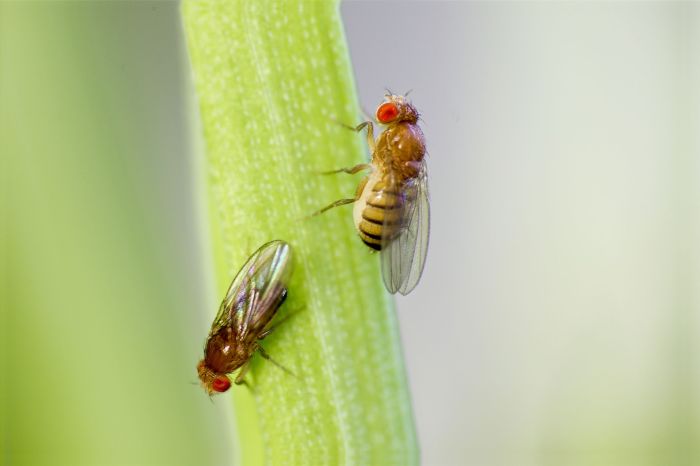
Houseplant gnats are a common nuisance for plant enthusiasts. These tiny flies are often found hovering around potted plants, especially those with moist soil. While they are not harmful to humans, they can cause problems for your plants. Understanding their life cycle and ideal conditions for reproduction can help you prevent and control infestations.
The Life Cycle of Houseplant Gnats
Houseplant gnats, scientifically known as fungus gnats, go through four distinct stages: egg, larva, pupa, and adult.
- Eggs:Female gnats lay tiny, white, oval-shaped eggs in the soil. These eggs are typically laid in clusters near the surface of the soil.
- Larvae:After hatching, the eggs develop into small, white, worm-like larvae. These larvae feed on decaying organic matter, such as dead roots and algae, found in the soil.
- Pupa:When the larvae reach their full size, they form a pupa. This is a resting stage where the larvae undergo metamorphosis into adults.
- Adults:Adult gnats emerge from the pupae. These are small, dark-colored flies with long legs and a distinctive “V” shape on their wings. They live for a short time, their primary goal being to mate and lay eggs, continuing the cycle.
Physical Characteristics of Houseplant Gnats
Houseplant gnats are typically small, measuring about 1/8 inch long. They have long, thin legs and dark, gray-black bodies. The most recognizable feature of houseplant gnats is the “V” shape on their wings. These gnats are often mistaken for fruit flies, but they are smaller and have a more slender body.
Ideal Conditions for Houseplant Gnat Reproduction
Houseplant gnats thrive in moist, organic-rich environments. These conditions are perfect for their larvae to feed and grow. Here are some factors that contribute to their reproduction:
- Overwatering:Excess water in the soil creates a favorable environment for the larvae to thrive.
- Organic Matter:The presence of decaying organic matter, such as dead roots, leaves, and algae, provides a food source for the larvae.
- Warm Temperatures:Houseplant gnats prefer warm temperatures, typically between 70-80 degrees Fahrenheit.
- High Humidity:Moist soil and high humidity levels create an ideal environment for egg laying and larval development.
Recognizing an Infestation: Houseplant Gnat Infestation
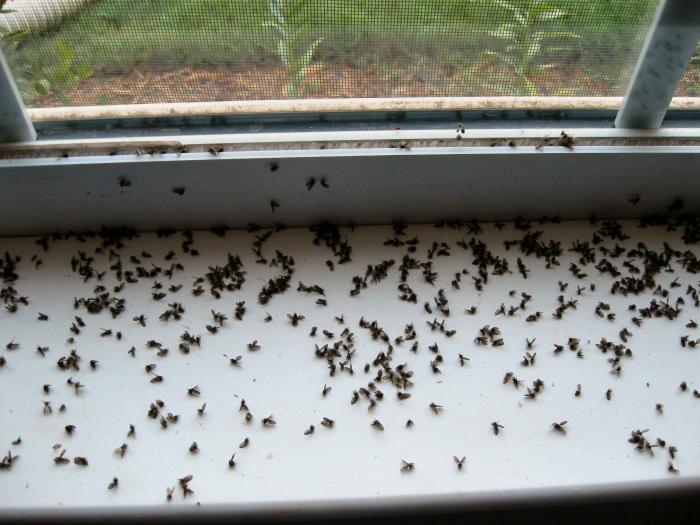
While you might not initially notice the presence of these tiny flies, there are several signs that point to a houseplant gnat infestation. Understanding these signs will allow you to catch the problem early and prevent it from escalating.
Signs of Infestation
The most common sign of a houseplant gnat infestation is the presence of small, flying insects around your plants. These gnats are usually black or dark gray and about 1/16 inch long. They are attracted to moisture and often gather around the soil surface of your plants.
- Flying Gnats:The most obvious sign is the presence of small, flying insects around your plants. These gnats are usually black or dark gray and about 1/16 inch long. They are attracted to moisture and often gather around the soil surface of your plants.
- Fungus Gnats:You might also notice small, worm-like creatures in the soil. These are the larvae of fungus gnats, which are the primary culprits of the damage.
- Yellowing or Wilting Leaves:The larvae of fungus gnats feed on the roots of plants, which can cause yellowing or wilting of leaves. If the infestation is severe, the plant may even die.
- Soil Molds:The presence of fungus gnats can also indicate an excess of moisture in the soil, which can lead to the growth of molds. Mold can be identified by its fuzzy appearance and often has a musty odor.
Damage Caused by Houseplant Gnats
Houseplant gnats, specifically the larvae, are the main culprits of damage to your plants. They feed on the roots, causing a range of issues:
- Root Damage:The larvae of fungus gnats feed on the roots of plants, which can cause root damage and stunting.
- Yellowing and Wilting:Root damage can lead to yellowing and wilting of leaves, as the plant struggles to absorb water and nutrients.
- Stunted Growth:The damage to the roots can also stunt the growth of your plants, making them weaker and more susceptible to diseases.
- Plant Death:In severe cases, the damage caused by houseplant gnat larvae can lead to the death of your plants.
Potential Harm to Plants
While houseplant gnats may seem like a minor nuisance, they can pose a significant threat to your plants.
- Weakened Plants:The damage caused by fungus gnat larvae weakens your plants, making them more susceptible to other pests and diseases.
- Spread of Diseases:Houseplant gnats can also spread diseases from one plant to another. The larvae can carry fungal spores on their bodies, which can infect healthy plants.
- Loss of Plants:In severe cases, a houseplant gnat infestation can lead to the loss of your plants. This can be a significant financial and emotional loss, especially if you have rare or valuable plants.
Preventing Houseplant Gnat Infestations
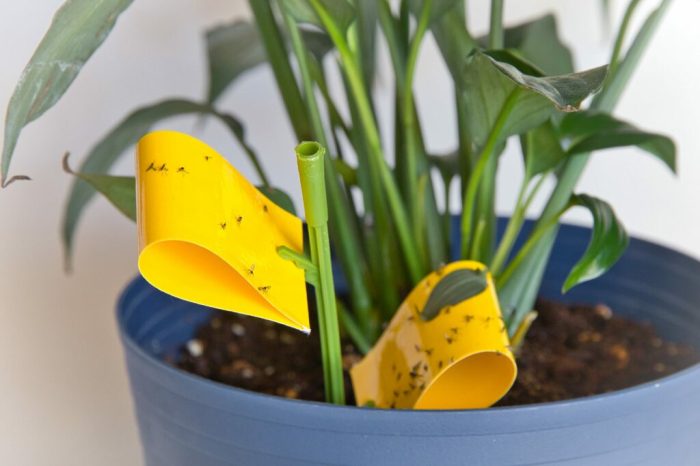
Preventing houseplant gnat infestations is crucial for maintaining healthy and thriving indoor plants. These pesky insects can quickly multiply, leading to damage and stress for your plants. Implementing a proactive approach to prevention is key to avoiding these problems.
Understanding Gnat Breeding Grounds
Gnats are attracted to moist environments, particularly those with decaying organic matter. Their eggs are often laid in the soil, and they thrive in overly wet conditions.
- Overwatering is a major contributor to gnat infestations. When soil remains consistently wet, it creates the ideal breeding ground for these insects.
- Excess organic matter in the soil, such as decaying leaves, roots, or food scraps, can also attract gnats and provide a source of nourishment for their larvae.
Preventing Gnat Infestations
By understanding the factors that contribute to gnat infestations, you can implement preventive measures to keep these pests at bay.
- Allow soil to dry out between waterings.This simple practice helps to prevent the soil from becoming too moist and discourages gnat breeding.
- Use well-draining potting mix.A potting mix that allows excess water to drain quickly can help prevent waterlogging and reduce the risk of gnat infestations.
- Avoid over-fertilizing.Excess fertilizer can contribute to gnat infestations by creating a rich, organic environment that attracts them.
- Clean up any fallen leaves or debris around your plants.These materials can provide breeding grounds for gnats.
- Use a sticky trap.Sticky traps are an effective way to monitor and control gnat populations. Place them near your plants to capture any gnats that may be present.
- Use beneficial nematodes.Beneficial nematodes are microscopic worms that prey on gnat larvae. They can be purchased online or at garden centers.
Creating a Gnat-Free Environment
Implementing these preventative measures can create a gnat-free environment for your houseplants.
- Regularly check the soil moisture.Use your finger to test the soil moisture before watering. If the top inch of soil feels dry, it’s time to water.
- Avoid watering from the top.Watering from the top can lead to waterlogging and encourage gnat infestations. Instead, water from the bottom by placing the pot in a saucer of water for a few minutes.
- Use a watering can with a long spout.This allows you to target the roots directly without wetting the leaves.
- Clean up spills and messes promptly.Any spills or messes around your plants can attract gnats.
- Use a fan to circulate air.Circulating air can help to dry out the soil and prevent gnat breeding.
Maintaining a Pest-Resistant Environment
A healthy and pest-resistant environment is essential for preventing gnat infestations.
- Inspect new plants carefully before bringing them home.Gnats can easily hitch a ride on new plants. Inspect the soil and leaves carefully for any signs of gnats or larvae.
- Quarantine new plants.Once you bring a new plant home, it’s a good idea to quarantine it for a few weeks to ensure it’s free of pests.
- Clean and disinfect pots and tools regularly.Cleaning and disinfecting pots and tools can help to prevent the spread of gnats and other pests.
- Use a fungicide if necessary.If you suspect a fungal infection in your soil, use a fungicide to treat it. Fungal infections can attract gnats.
Treating Houseplant Gnat Infestations
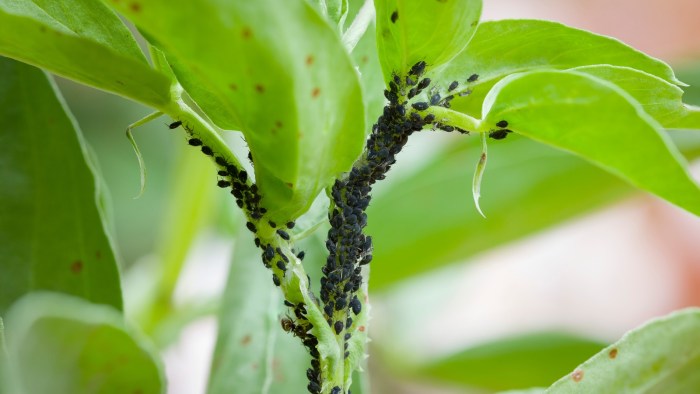
Once you’ve identified a houseplant gnat infestation, it’s time to take action. There are several effective methods for eliminating these pesky insects, and the best approach often depends on the severity of the infestation and your personal preferences.
Using Insecticidal Soap
Insecticidal soap is a common and effective way to treat houseplant gnat infestations. It works by disrupting the insect’s outer layer, leading to dehydration and death.
- Dilute the insecticidal soap according to the product instructions.
- Thoroughly spray the soil surface of your infested plants, making sure to cover the entire area.
- Repeat the application every few days until the infestation is gone.
Applying Neem Oil
Neem oil is a natural insecticide derived from the neem tree. It is safe for use around plants and pets and is effective against a variety of pests, including houseplant gnats.
- Mix neem oil with water according to the product instructions.
- Spray the soil surface of your infested plants, ensuring the oil comes into contact with the gnats.
- Repeat the application every few days until the infestation is gone.
Using Yellow Sticky Traps
Yellow sticky traps are a passive method for controlling houseplant gnats. They attract the gnats to their bright yellow color, and the sticky surface traps them.
- Place the yellow sticky traps near your infested plants.
- Replace the traps as they become full of gnats.
Employing Diatomaceous Earth
Diatomaceous earth is a natural powder made from fossilized algae. It works by scratching the exoskeletons of insects, leading to dehydration and death.
- Sprinkle diatomaceous earth on the soil surface of your infested plants.
- Make sure to cover the entire area, as the gnats will need to come into contact with the powder to be affected.
- Reapply diatomaceous earth as needed, especially after watering.
Introducing Beneficial Nematodes, Houseplant gnat infestation
Beneficial nematodes are microscopic worms that prey on houseplant gnat larvae. They are an effective and environmentally friendly way to control the infestation.
Those pesky houseplant gnats are driving me crazy! I’ve tried everything – sticky traps, neem oil, even repotting – but they just keep coming back. Maybe I should just embrace the natural world and let them hang out in my backyard instead.
But then again, I’m sure they’d just find their way back inside, so I guess I’m stuck with this indoor battle for now.
- Purchase beneficial nematodes from a garden center or online retailer.
- Follow the instructions on the product label carefully, as the application method may vary depending on the type of nematode.
- Apply the nematodes to the soil of your infested plants, and they will begin to work immediately.
Utilizing Hydrogen Peroxide
Hydrogen peroxide is a common household disinfectant that can also be used to treat houseplant gnat infestations. It works by oxidizing the soil and killing the gnat larvae.
- Dilute hydrogen peroxide with water at a ratio of 1:1.
- Pour the solution onto the soil surface of your infested plants.
- Repeat the application every few days until the infestation is gone.
Employing Mosquito Dunks
Mosquito dunks are small, donut-shaped tablets that contain Bacillus thuringiensis israelensis (Bti), a bacterium that is toxic to mosquito larvae. Bti is also effective against houseplant gnat larvae.
- Place a mosquito dunk in a container of water and allow it to dissolve.
- Pour the solution onto the soil surface of your infested plants.
- Repeat the application every few weeks, or as needed.
Natural Remedies for Houseplant Gnats
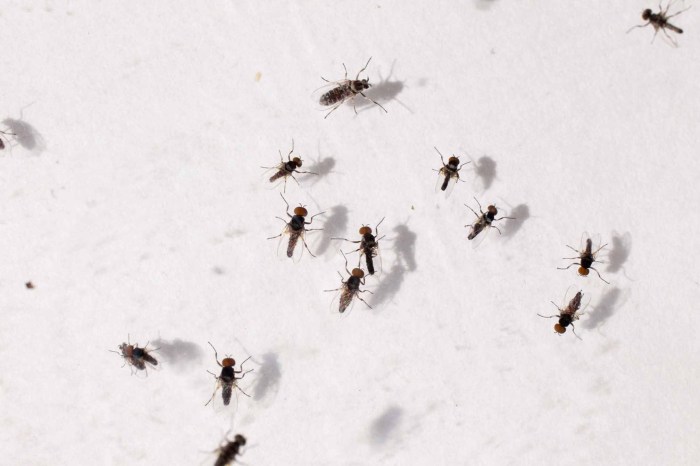
Sometimes, chemical pesticides aren’t the best solution for houseplant gnat infestations. If you’re looking for a more natural approach, there are several effective remedies you can try. These remedies are generally safe for your plants and pets, and they can be just as effective as chemical treatments.
Trapping Houseplant Gnats
Trapping houseplant gnats is a simple and effective way to reduce their population. There are several different types of traps you can use, and they can be easily made at home.
- Yellow Sticky Traps:These traps are particularly effective because houseplant gnats are attracted to the color yellow. The sticky surface traps the gnats and prevents them from reproducing. Simply cut out squares of yellow paper and coat them with a sticky substance, such as petroleum jelly or honey.
You can also purchase pre-made yellow sticky traps from most garden centers.
- Apple Cider Vinegar Traps:Houseplant gnats are attracted to the scent of apple cider vinegar. To create a trap, fill a small dish with apple cider vinegar and add a drop of dish soap. The soap reduces the surface tension of the vinegar, making it harder for the gnats to escape.
- Homemade Traps:You can create homemade traps using a variety of materials. For example, you can use a plastic bottle with the top cut off and inverted, with a piece of fruit or a few drops of apple cider vinegar at the bottom.
The gnats will be attracted to the fruit or vinegar and will fly into the bottle, but they won’t be able to escape.
Using Beneficial Organisms
Beneficial organisms can help to control houseplant gnat populations. These organisms are natural predators of houseplant gnats and can help to keep their numbers in check.
- Nematodes:These microscopic worms are natural predators of houseplant gnat larvae. You can purchase nematodes from most garden centers. They are typically applied to the soil and will seek out and kill the larvae.
- Predatory Mites:These tiny mites are also natural predators of houseplant gnat larvae. They can be purchased from garden centers and released into the soil.
Other Natural Remedies
There are several other natural remedies that can help to control houseplant gnat infestations.
- Diatomaceous Earth:This is a fine powder made from fossilized diatoms. It is a natural insecticide that works by dehydrating the insects. Sprinkle a thin layer of diatomaceous earth around the base of your plants, being careful not to get it on the leaves.
- Cinnamon:Cinnamon is a natural antifungal and insecticide. Sprinkle a thin layer of cinnamon around the base of your plants to help control houseplant gnat populations.
- Neem Oil:Neem oil is a natural insecticide that can be used to control a variety of pests, including houseplant gnats. Mix a few drops of neem oil with water and spray it on your plants.
Home Remedies for Houseplant Gnats
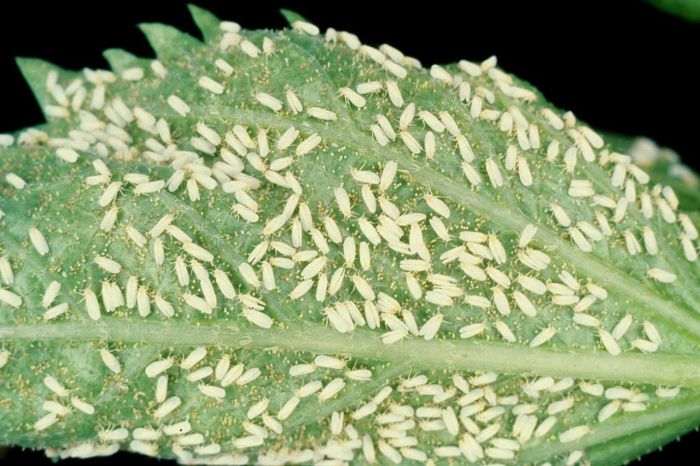
If you’re tired of battling houseplant gnats with store-bought pesticides, you’re in luck! There are several effective home remedies that can help you control these pesky insects without resorting to harsh chemicals. These methods are generally safe for your plants and pets, and they can be just as effective as commercial products.
Effectiveness and Limitations of Home Remedies
Home remedies for houseplant gnats are generally effective in controlling small infestations. They work by disrupting the gnats’ life cycle, making it difficult for them to reproduce and thrive. However, it’s important to note that these remedies might not completely eliminate the gnats, and you may need to repeat the treatments regularly to keep the infestation under control.
Also, some remedies might not be suitable for all plants, so it’s crucial to test them on a small area of your plant first before applying them to the entire plant.
Home Remedies for Houseplant Gnats
Here’s a table showcasing various home remedies for houseplant gnats, along with their ingredients, preparation, and application methods:
| Remedy | Ingredients | Preparation | Application |
|---|---|---|---|
| Yellow Sticky Traps | Yellow sticky paper, scissors | Cut yellow sticky paper into strips and place them around the affected plants. | Place the traps near the soil surface, where gnats are most active. |
| Apple Cider Vinegar Trap | Apple cider vinegar, shallow dish, dish soap | Pour apple cider vinegar into a shallow dish and add a few drops of dish soap. | Place the dish near the affected plants. The gnats will be attracted to the vinegar and drown in the soapy water. |
| Diatomaceous Earth | Diatomaceous earth | Sprinkle diatomaceous earth around the base of the affected plants. | Diatomaceous earth is a natural powder made from fossilized diatoms. It works by dehydrating the gnats and killing them. |
| Neem Oil Spray | Neem oil, water, spray bottle | Mix a few tablespoons of neem oil with a quart of water in a spray bottle. | Spray the mixture on the leaves and soil of the affected plants. Neem oil is a natural insecticide that repels and kills gnats. |
| Peppermint Oil Spray | Peppermint oil, water, spray bottle | Mix a few drops of peppermint oil with a quart of water in a spray bottle. | Spray the mixture on the leaves and soil of the affected plants. Peppermint oil is a natural insect repellent that can deter gnats. |
| Hydrogen Peroxide Solution | Hydrogen peroxide, water | Mix equal parts hydrogen peroxide and water in a spray bottle. | Pour the solution directly into the soil of the affected plants. Hydrogen peroxide helps break down organic matter in the soil, making it less hospitable to gnats. |
Identifying and Eliminating the Source of Infestation
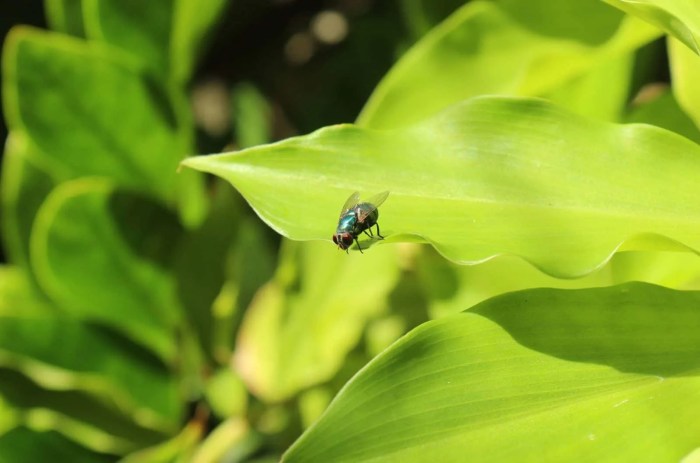
You’ve identified a houseplant gnat infestation, treated your plants, and now you’re ready to tackle the source of the problem. The most important step is to identify where the gnats are breeding and then eliminate that source. This will help prevent a re-infestation and keep your plants healthy.
Identifying Potential Sources
The first step is to determine where the gnats are breeding. These pesky insects need moisture and organic matter to thrive. Common breeding grounds include:
- Overwatered Soil:The most common source of houseplant gnats is damp soil. If you water your plants too frequently, the soil will stay wet for extended periods, creating a perfect breeding ground for gnats.
- Organic Matter:Houseplant gnats are attracted to decaying organic matter, such as fallen leaves, dead roots, and leftover potting mix.
- Drainage Issues:If your pots don’t have drainage holes or the holes are clogged, water will accumulate at the bottom, creating a breeding ground for gnats.
- Standing Water:Any standing water, such as in saucers under pots or in humidifiers, can attract and breed houseplant gnats.
- Compost:If you use compost in your potting mix, it can attract gnats, especially if it’s not fully composted.
Eliminating the Source of Infestation
Once you’ve identified the source of the infestation, you can take steps to eliminate it.
Overwatered Soil
- Allow the soil to dry out:Let the top inch or two of soil dry out completely between waterings.
- Adjust watering frequency:If you’re watering your plants too often, adjust your watering schedule to allow the soil to dry out more thoroughly.
- Improve drainage:Ensure your pots have drainage holes and that the holes are not clogged.
Organic Matter
- Remove dead leaves and debris:Regularly remove any fallen leaves, dead roots, or other organic matter from the soil surface and surrounding areas.
- Clean up spilled potting mix:Clean up any spilled potting mix promptly to prevent gnats from breeding in it.
Drainage Issues
- Check for clogged drainage holes:Make sure the drainage holes in your pots are not clogged with dirt or debris.
- Repot if necessary:If your pots don’t have drainage holes, consider repotting your plants into pots with drainage holes.
Standing Water
- Empty saucers:Empty any saucers under your pots after watering to prevent water from accumulating.
- Clean humidifiers:Clean your humidifiers regularly to prevent the buildup of moisture and organic matter.
Compost
- Use fully composted material:If you use compost in your potting mix, make sure it’s fully composted to reduce the risk of attracting gnats.
- Consider alternatives:If you’re concerned about gnats, you may want to consider using a different type of potting mix that doesn’t contain compost.
Long-Term Solutions for Preventing Houseplant Gnats
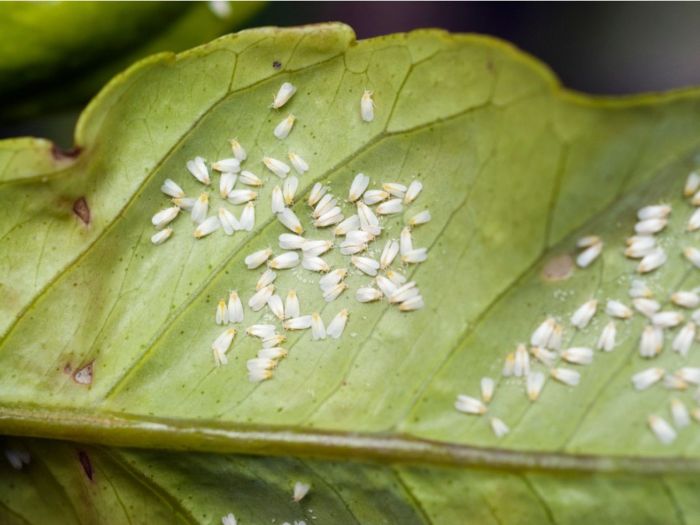
Once you’ve successfully eradicated a gnat infestation, it’s crucial to implement long-term strategies to prevent them from returning. These measures address the root causes of infestations, creating a less hospitable environment for gnats and ensuring your houseplants thrive without pesky pests.
Maintaining a Gnat-Free Environment
A gnat-free environment is a proactive approach to preventing infestations. It involves maintaining a consistently dry soil surface and limiting access to standing water, both of which attract gnats.
- Water Only When Necessary:Overwatering is a primary cause of gnat infestations. Allow the top inch of soil to dry out between waterings, ensuring the soil isn’t constantly damp.
- Use Drainage Holes:Ensure your pots have drainage holes to allow excess water to escape.
- Avoid Trays with Standing Water:If you use saucers or trays beneath your pots, empty them regularly to prevent water from accumulating.
- Clean Up Spills:Immediately clean up any spills or leaks around your plants, as standing water can attract gnats.
Preventing Gnats from Entering Your Home
Preventing gnats from entering your home is an essential part of long-term prevention. Gnats can enter through open windows and doors, so it’s important to take steps to keep them out.
- Use Screens:Make sure your windows and doors have tight-fitting screens that are free of rips or holes.
- Keep Doors and Windows Closed:When possible, keep doors and windows closed, especially during periods of high gnat activity.
- Repair Cracks and Gaps:Seal any cracks or gaps around windows, doors, and pipes to prevent gnats from entering.
Maintaining Healthy Houseplants
Healthy plants are less susceptible to gnat infestations. By providing proper care, you can create a less hospitable environment for gnats.
- Use High-Quality Potting Mix:Choose a well-draining potting mix that doesn’t retain too much moisture.
- Repotting:Repot your plants as needed, ensuring they have enough space and fresh potting mix.
- Fertilizing:Over-fertilizing can lead to excess nutrients in the soil, which can attract gnats. Use fertilizer sparingly and follow the instructions on the package.
Regular Inspections and Maintenance
Regular inspections and maintenance are essential for early detection and prevention of gnat infestations.
- Inspect Plants Regularly:Look for signs of gnat activity, such as small, flying insects, larvae in the soil, or yellowing leaves.
- Clean Pots and Trays:Regularly clean your pots and trays with soap and water to remove any gnat eggs or larvae.
Closing Notes
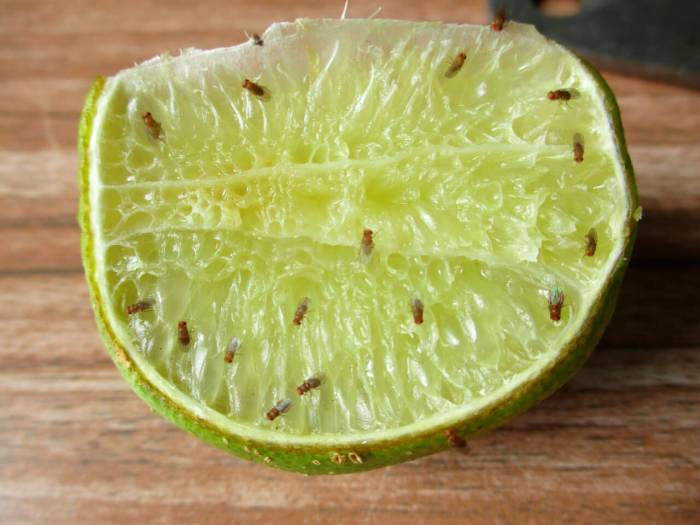
Tackling houseplant gnat infestations is a journey that requires vigilance and the right approach. By understanding the lifecycle, identifying the signs, and implementing preventive measures, you can keep your plants healthy and your home free from these pesky pests. Remember, a proactive approach is key to maintaining a thriving plant collection and enjoying the beauty of your green companions without the unwanted buzz of houseplant gnats.